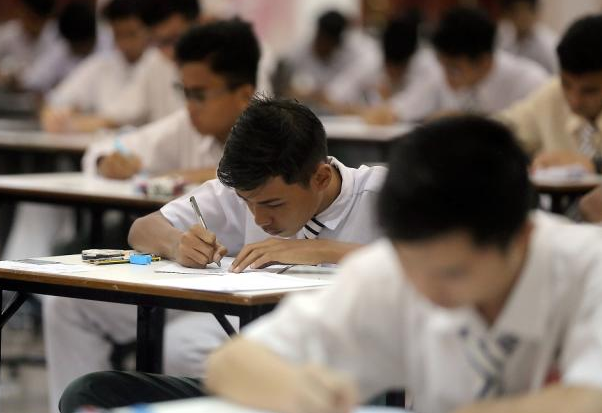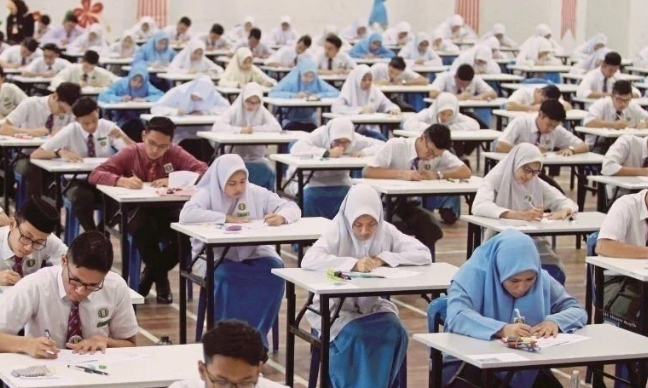The full form of Malaysia’s SPM is “Sijil Pelajaran Malaysia,” equivalent to a high school certificate.
Table of Contents
Examination Subjects
I am an SPM graduate. Sijil Pelajaran Malaysia or the Malaysian Certificate of Education is a significant academic accomplishment for every secondary school student in Malaysia. Over the course of the examination, students will be accessed on a range of subjects. However, there is always a set of five core subjects, which include Bahasa Malaysia, English, Mathematics, Science, and more. The above mentioned core subjects are essential because they form the basis for students’ academic and career aspirations .
First, proficiency in English and Bahasa Malaysia is crucial. Although the medium of instruction in other courses may differ, these two languages are commonly required for studying in most colleges and universities in and outside Malaysia. Mathematics and Science are vital for students pursuing their career in engineering, health sciences, information technology, etc. Therefore, the more students aspire to balance highly specialized fields, the higher the effect of SPM results on the quality of their education.
Second, the elective subjects serve various interests and opportunities for students, including their possible career choice. Some students are interested in more modern languages, arts, and literature, while others feel more inclined towards studying natural sciences . That is why the elective subjects range from Arabic and French to Physics, Chemistry, Biology, Principles of Accounting, and Commerce. Thus, students who wish to study to become chemical engineers should focus on Chemistry and Additional Mathematics, while prospective graphic designers should specialize in Art and Design. It should be noted that the content of each of the prescribed subjects does not only impart knowledge but facilitates students’ application of them. The above-mentioned appears to relate to the types of tests on the Sijil Pelajaran Malaysia. They include multiple-choice questions, structed questions, and practical tests on each prescribed subject. While the first two points verify students’ theoretical knowledge and problem-solving skills, the last test covers issues in settings and problem-solving. An increase in lab experiments points should be mentioned in relation to each of the subjects. Following the above, the results of the Sijil Pelajaran Malaysia examination have a significant impact on students’ opportunities to pursue a pre-university program, such as the Malaysian Higher School Certificate , matriculation course, or diploma. This, in turn, facilitates their education for a degree in a college or university in Malaysia. For example, a student with a few distinctions in the Science subjects will have more chances to apply for highly competitive medicine and engineering courses at the country’s leading tertiary institutions.

Education Level
The SUijul Pelajaran Malaysia * SPM , or the Malaysian Certificate of Education is the Malaysian Education System’s golden gate, the end of secondary study. The SPM is the equivalent of the General Certificate of Secondary study in the United Kingdom. This type of certification must be passed in order to pursue higher education and training within the country of Malaysia.
Students undertake the certification after spending five years in secondary study. The students have already honed the skills needed at this academic level. The SPM is not mandatory in the country, but it is the benchmark used to gauge the skills of the students applying to pursue higher education. Therefore, this time is critical, coming at the age of seventeen, and showing what paths students will follow in their career and educational life. The results of the SPM determine the students’ eligibility for entering advanced studies or the workforce.
It is a critical component of the education system due to its role in shaping the academic foundations necessary at a higher learning environment. Students doing well in the SPM enter Form 6 or matriculation colleges where they train for more advanced skills. However, a less successful student can use this to gain competency-based certificates such as a Diploma in Culinary Arts, Diploma in Automotive Engineering or a Diploma in Information Technology. These diplomas give the students practical and vocational skills relevant to the job market within Malaysia.
The SPM also defines a student’s future as it is used by both universities and employers to gauge a student’s competency 14 . Students are required to have passed critical subjects such as mathematics and English with at least a credit. The subjects are included in the SPM to set a standard and guideline for subsequent learning. In terms of educational opportunities, SPM opens up many doors. A student can choose to continue studying while others qualify to enter the workforce barely. Students taking the academic path thereafter hold a higher earning potential and have the opportunity to climb the job ladder better than others do.
Purpose and Progression
The Sijil Pelajaran Malaysia , or the Malaysian Certificate of Education, is a critical milestone in the Malaysian education system. It is intended to ascertain the academic competencies and preparedness of a student to either pursue higher studies or to enter the workforce. As such, this level of assessment is designed to be the final evaluation in secondary education, affecting the direction of further studies and work opportunities of the student. SPM results directly impact the students’ ability to further their education on multiple paths or directly seek employment.
Specifically, SPM qualification is the minimum standard for around 15-16 year-old students “to seek employment, either in the private or public sectors” , especially in job areas that require no more than lower secondary education. For these students, SPM is the demanding benchmark that they need to target to find entry-level employment or pursue an apprenticeship or vocational college . Thus, SPM serves as the essential qualification needed to enter many industries, providing a basis of literacy and numeracy for the employees to go through the job training programs of the organization. These fields may place more emphasis on the students’ understanding of vocational skills and hands-on training, involving direct labor elements, as it is more crucial in certain sectors like manufacturing industries, graphic designers, and equipment repair professionals, for example.
Likewise, SPM qualification is a requirement to continue education on other paths beyond secondary level for students who excel in their studies and wish to further their education. The SPM qualification leads a student to “pre-university courses such as the Malaysian Higher School Certificate (STPM) and other local and international matriculation programs for a bachelor’s degree” , foundation programs, matriculation courses, or diploma in the relevant field of study. For instance, to enroll in science-related pre-university courses, a student needs to achieve a certain level of proficiencies in STEM subjects and languages.

Exam Administration
The administration of the SPM task is a meticulous and complex process, which is overseen by the Malaysian Examinations Syndicate, a critical branch of the Ministry of Education. The body is responsible for ensuring that the SPM examination adheres to meticulous standards of fairness, accuracy, and verification of security. The candidates undergo an annual examination across Malaysia. The organization is supported by various schools that supervises the exams across the country. In order to manage the examination of such a nature, the nation has to coordinate thousands of students across the nation. The examination is organised across the nation at the same time. The exam papers are the same, the coordinate systems are the same, together with the supervision teams and security is also the same. The exams are usually held in November each year. The examination covers a wide area of subjects as different streams form part of the students’ curriculum.
The examination begins with the registration of the candidates. Registration enables the students to provide the necessary personal information and other educational indicators. At this stage, the students indicate the subjects they will be taking making it easier for the body organising the examination to determine the number of subjects required, the number of papers to be distributed at specified schools, at specified times. The students, the qualified candidates, are informed of their examination numbers after the registration process. Schools are then provided with the necessary requirements for conducting the exam. The school materials are the same and should be able to handle the examination accordingly. The candidates then appear for the exams. The examination process is well coordinated, invigilators and other staff of the school are fully alert during the examination period. No candidate is allowed entrance into the examination rooms after the deposition of question paper. The process after the exam interaction between the schools and the body responsible for the examination collects distributes the examination answer scripts across the nation. The papers are then marked by the numerous examiners who are teachers and are informed of the subjects they mark. The mark each student obtains is relevant for it will determine the next move of every candidate. Schools then collect the results and submit them ready for official publication.
Grading System
The Sijil Pelajaran Malaysia system grading system is a structured means of evaluating and assigning categories to student performance across the spectrum of different subjects . The grading system ranges between A+ and G, whereby A+ signifies an impressive performance, and G conveys a message that the student did not meet the minimum requirements of attaining the skill. The Sijil Pelajaran Malaysia grade and score correspond to various ranges.
The A+ may typically have a range between marks of 90 to 100, indicating an outstanding mastery of the subject. The A and A- also constitute high-ranking grades in the system. The B+ to C range may denote there is yet a certifiable range of competence. Notably, the C ranges imply a pass mark while the D, E, and G ranges imply a fail. There is an inadequacy of mastery of the subject matter among the D, E, and G grades.
The SPM grading system plays an instrumental role in determining the available educational opportunities in a student’s life. For instance, one has to secure at least a credit in the core subject to secure an opportunity in the increasingly competitive pre-university programs, that is, Form 6 or matriculation. The core subjects that require at least a credit are such as Mathematics, English, and Science equivalents. In case one aspires to become a medical doctor or an engineer, they need to secure a high grade point average in the science subjects equivalent to A- or more.
Initially, students are expected to attain their best grades in the Sijil Pelejaran systems then the Malaysia Certificate of Education. Additionally, employers use the SPM results to gauge the abilities, which determine whether they will gain a formal employment opportunity. A competent achievement in the SPM can lead to advantages among various employees.

